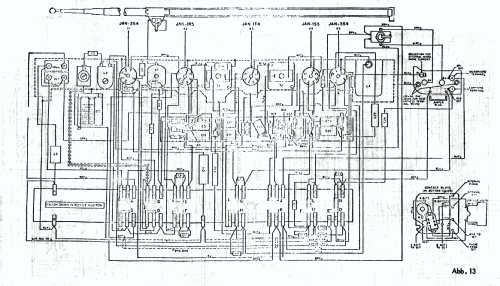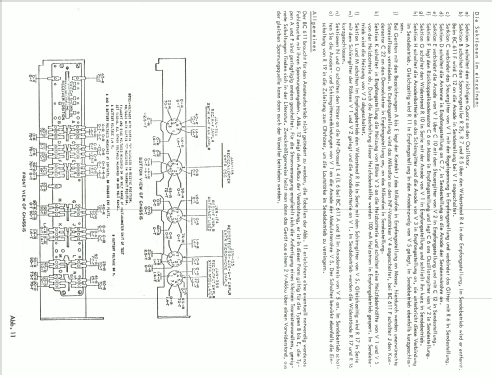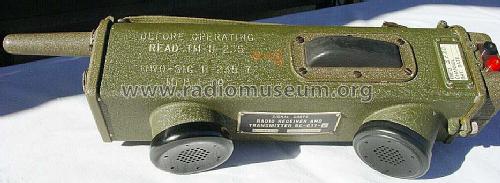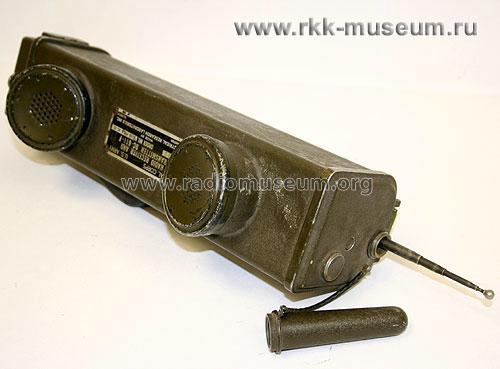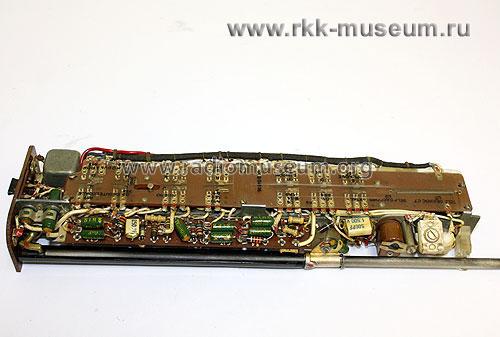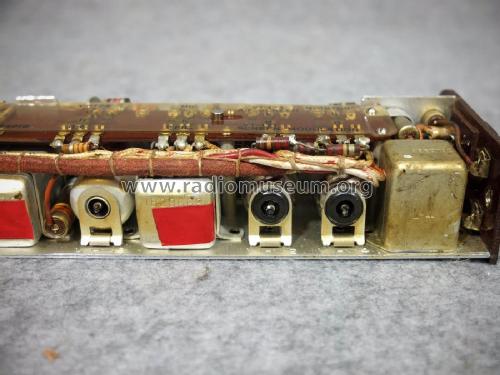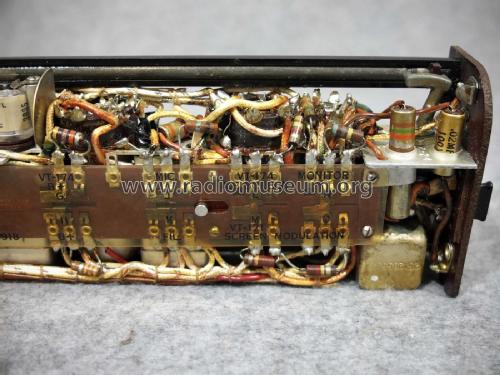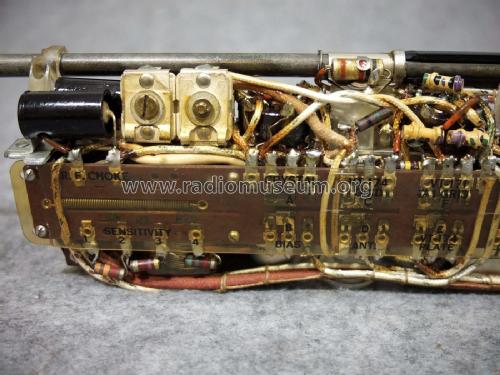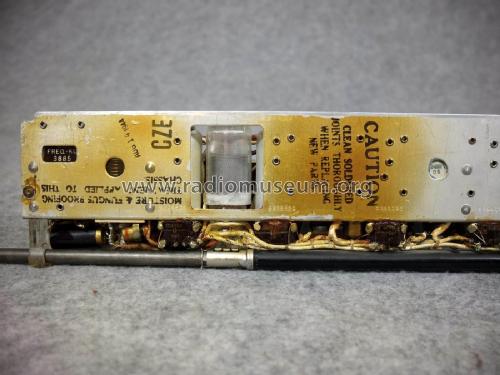SCR-536 Radio Set BC-611 (Variants A, B, C, D, E and F)
MILITARY U.S. (different makers for same model)
- País
- Estados Unidos
- Fabricante / Marca
- MILITARY U.S. (different makers for same model)
- Año
- 1941–1956
- Categoría
- Transceptor militar
- Radiomuseum.org ID
- 71779
Haga clic en la miniatura esquemática para solicitarlo como documento gratuito.
- Numero de valvulas
- 5
- Principio principal
- Transceiver; ZF/IF 455 kHz
- Gama de ondas
- Bandas de recepción puestas en notas.
- Tensión de funcionamiento
- Baterías recargables o pilas / 1.5/103.5 Volt
- Altavoz
- Altavoz dinámico (de imán permanente)
- Material
- Metálico
- de Radiomuseum.org
- Modelo: SCR-536 Radio Set BC-611 - MILITARY U.S. different makers
- Forma
- Formas varias descritas en notas aparte.
- Ancho, altura, profundidad
- 80 x 320 x 90 mm / 3.1 x 12.6 x 3.5 inch
- Anotaciones
- The first ever made AM "Handy-Talky", for the US-Service. One channel xtal-operation in the range 3.5 - 5.995 MHz. Variants -A to -F. Another part of SCR-536 is the Box BX-49, containing components for 12 different frequencies or "channels". In chest CH-233 all 50 official channel-components were multiple available in 2 boxes. After channel-changing, realignment with Test Set IE-17 was needed. The official channel 3885 kHz was often used by Amercian hams, but in Europe suitable x-tals for lower frequencies had to be applied. The given weight is inclusive the 0,75 kg. batteries.
See also the Swiss Army variant FOX SE-100, the French variant or the Case CH-312 from Munston.
- Peso neto
- 2.5 kg / 5 lb 8.1 oz (5.507 lb)
- Documentación / Esquemas (1)
- -- Original-techn. papers. (TM11-265 dated 1945. TM11-4019 dated 1945.)
- Documentación / Esquemas (2)
- The Surplus Handbook - Receivers and Transmitters (page 31-32)
- Autor
- Modelo creado por un miembro de D. Ver en "Modificar Ficha" los participantes posteriores.
- Otros modelos
-
Donde encontrará 408 modelos, 360 con imágenes y 215 con esquemas.
Ir al listado general de MILITARY U.S. (different makers for same model)
Colecciones
El modelo SCR-536 Radio Set es parte de las colecciones de los siguientes miembros.
Museos
El modelo SCR-536 Radio Set se puede ver en los siguientes museos.
Contribuciones en el Foro acerca de este modelo: MILITARY U.S.: SCR-536 Radio Set BC-611
Hilos: 2 | Mensajes: 3
Die Entwicklung begann 1941 und lag in den Händen der Fa. Motorola. Siehe auch GFGF-Funkgeschichte Nr. 140, Seite 279ff. (Nov./Dez. 2001).
Eilert Menke, 18.Jun.04








